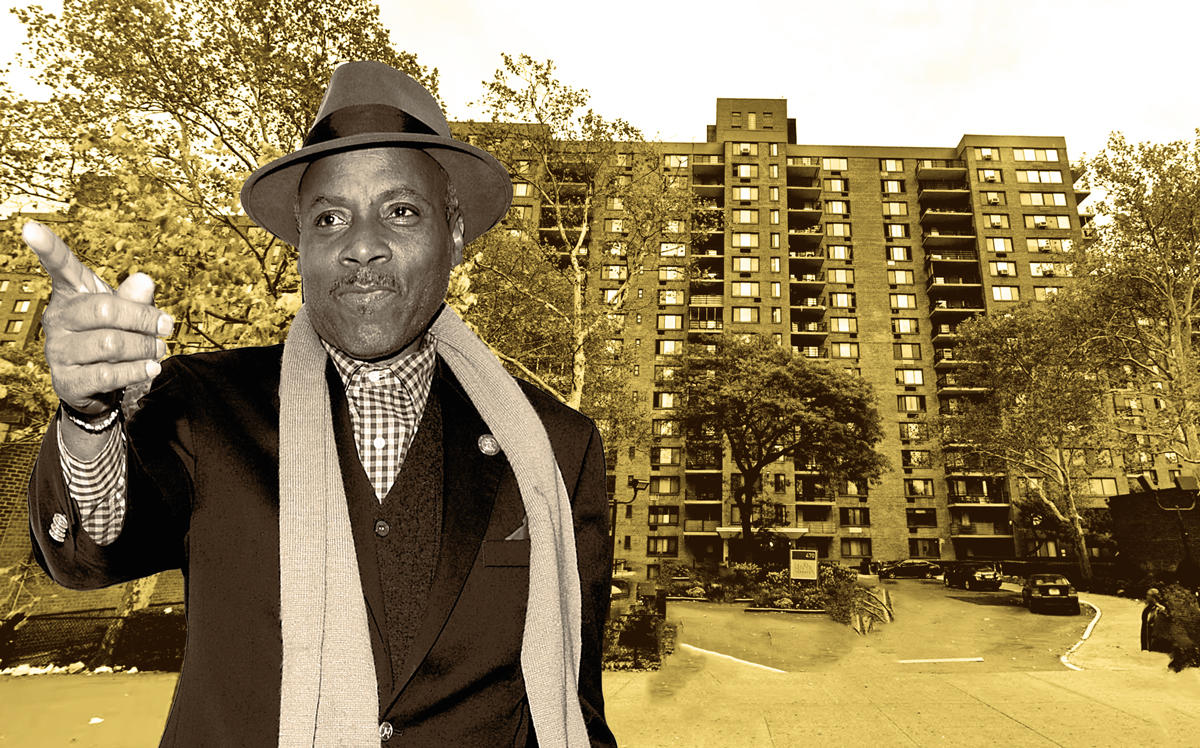Trending
Is Olnick bluffing on Lenox Terrace? History says no
Developer could build market-rate project if City Council won’t play ball

When City Council member Bill Perkins announced he was opposing the Olnick Organization’s Lenox Terrace expansion, the development appeared doomed: Perkins wields de facto veto power over the rezoning it needed.
“This project is not good for our community,” Perkins said last week, according to Politico. “The Olnick Organization has shown itself to be a bad player in this community for years, not just since this zoning change was conceived over a decade ago.”
Olnick’s rezoning proposal would allow for five new rental apartment buildings with 1,600 residential units, 400 of which would be affordable. The project has attracted strong opposition from the community, mainly over gentrification concerns.
But Olnick could build a smaller project as-of-right, meaning without the Council approval needed for its original plan. And the firm recently indicated it is prepared to do just that.
If history is any indication, Perkins has cause for concern.
At the Long Island College Hospital site in Cobble Hill, for instance, Fortis Property Group in 2016 moved forward with a market-rate housing project after failing to agree with the local Council member on zoning that would have allowed taller towers in exchange for affordable units and other community amenities.

Brad Lander
The Council member, Brad Lander, who had wanted Fortis to build a new school, declined to comment for this story. However, he tweeted shortly after the decision that Fortis “has not had any real conversations w/community or electeds about their plans in 10 months. This decision is on them, and no one else.”
Fortis has not had any real conversations w/community or electeds abt their plans in 10 months. This decision is on them, and no one else.
— Brad Lander (@bradlander) November 4, 2016
A mall planned in 2009 by the Related Companies for the Kingsbridge Armory in the Bronx ran into similar political resistance. The Bronx political establishment insisted the new zoning require all jobs at the site pay a “living wage,” which at the time was $10 an hour plus benefits or $11.50 without benefits.
Related and Mayor Michael Bloomberg said at the time that such a requirement could make it virtually impossible to get financing for the project because lenders would worry that retail tenants would be scared off by the wage mandate.
But Bronx elected officials would not budge, and development rights instead went to a group including former New York Ranger Mark Messier that aimed to turn the site into an ice-rink complex. Financing for it has proved elusive, and the massive armory remains empty. Group leader Kevin Parker told the Norwood News in July that he hoped to announce within the next year that the project would be ready to build.
“I’m very confident we’re going to get there,” he said. “It’s just not a straight line. Nothing ever is in life.”
The experiences with the Fortis and Related projects help explain why the vast majority of the time, developers and Council members compromise on rezonings, usually just before the seven-month public review process concludes with a Council vote. The idea is that upzoning allows for more market-rate units, generating profits that can be used to pay for community benefits and subsidize rents at perhaps 25 percent of the apartments.
Olnick has said that, if it cannot come to terms on a rezoning, it will build a smaller project with none of the affordable apartments or public amenities in its initial proposal. The smaller plan would feature four buildings standing 200 feet tall, rather than five buildings that are 284 feet tall.
A statement from Olnick Organization spokesman Tom Corsillo indicated that the company was not ready to give up.
“The best way to keep Harlem affordable is to create more affordable housing, and at Lenox Terrace that is only feasible through the proposed rezoning,” he said. “We look forward to continuing to make the case that the largest private affordable housing initiative in Harlem is worth supporting.”
In response to an inquiry, Perkins’ office sent the testimony he brought to a Council meeting last week about the Olnick project. It concluded, “building as-of-right is still wrong.”
But Perkins has not said which of those two choices he would prefer. His office did not respond to a follow-up question.




